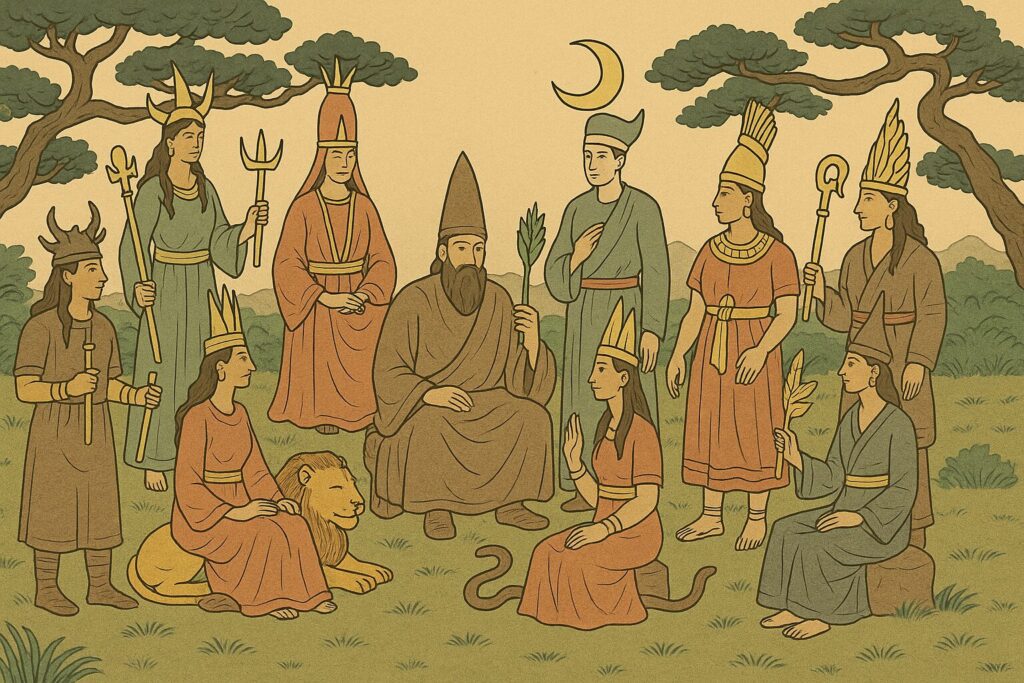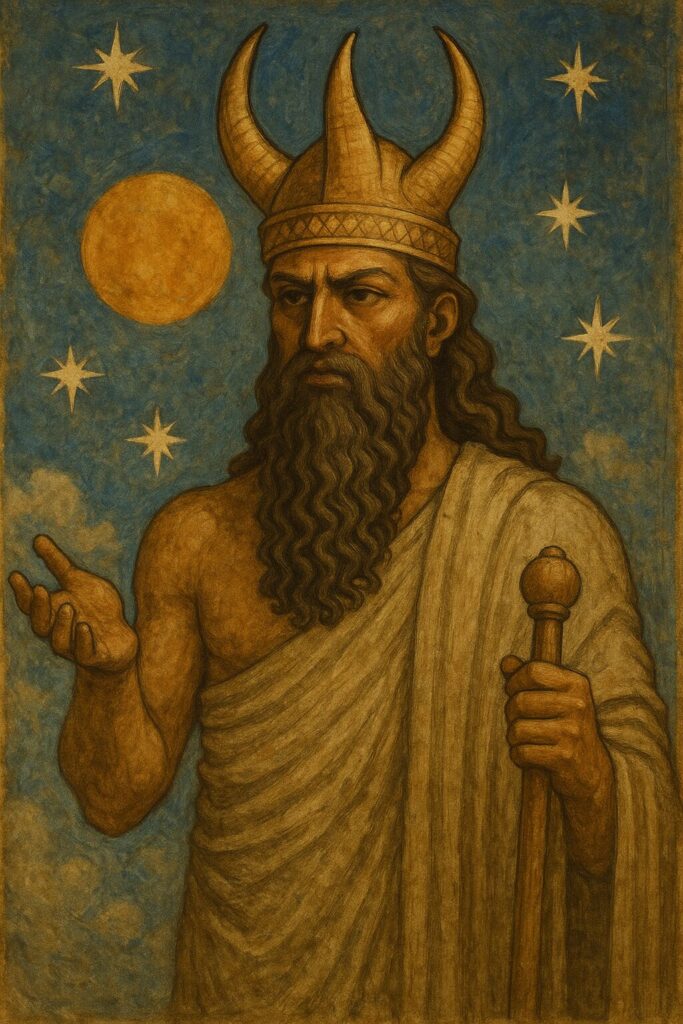Sumerian Pantheon

The Anunnaki Conclave

An (Anu)
The God of the Sky is supreme ruler of the gods. He is the father of many deities and represents the celestial heavens. He is the source of divine authority, granting kingship and control to mortals. His symbol is a horned crown, representing divine power.

Enlil
The God of Wind, Air and Kingship is one of the most powerful gods in the Sumerian pantheon. He is the patron deity of Nippur and is considered the creator of civilization and law. He was also responsible for major floods and divine punishments but later helped restore order. He holds the Tablets of Destiny, which give him authority over fate.

Enki (Ea)
The God of Wisdom, Water and Magic is one of the most beloved deities due to his role as a protector of humanity. He provided knowledge to mortals and warned Ziusudra (Sumerian Noah) about the great flood. He is often depicted with streams of water flowing from his shoulders, symbolizing his role as the giver of life.

Ninhursag
The Goddess of Earth and Fertility, also known as Ki or Ninmah, is the mother goddess of fertility, nature, and the earth. She is considered the divine mother of kings and humans, shaping the first humans from clay. She is often called upon for healing and is sometimes depicted as a nurturing figure. Her symbol is the omega sign or mountains, representing the earth.

Inanna (Ishtar)
The Goddess of Love, War and Fertility is one of the most complex deities, embodying both sensuality and destruction. She is famous for her descent into the underworld, where she was killed but later resurrected. Inanna is often depicted with a lion and the eight-pointed star, symbolizing her power and dominance.

Utu (Shamash)
The God of the Sun and Justice, travels across the sky in his chariot of light, illuminating the world and upholding justice. He plays a key role in divine judgment, helping mortals and gods by revealing hidden truths. His symbols include the sun disk and rays of light.

Nanna (Sin)
The God of the Moon, Time and Wisdom is the father of Utu (Shamash) and Inanna (Ishtar). His movements across the sky were essential for measuring time and creating calendars. He is often depicted as an old man with a crescent moon on his head.

Ereshkigal
The Goddess of the Underworld is the ruler of the dead. Unlike her sister Inanna, who represents life and passion, Ereshkigal governs the realm of the deceased. She is a stern and feared goddess, ensuring that souls do not escape her domain. She is central to the myth of Inanna’s descent into the underworld, where she temporarily kills Inanna.

Ninurta
The God of War and Agriculture is a heroic warrior deity, often battling demons and monsters to restore order. He was also associated with farming and irrigation, making him an important deity for the survival of civilization. His symbol is a mace or plow, representing both destruction and cultivation.

Nergal
The God of Plague, War and the Underworld is a consort to Ereshkigal, ruling alongside her. Though associated with chaos and pestilence, he also had protective qualities, guarding the underworld from intruders. His symbol is a lion or mace, representing his fierce power.

Gula (Ninisina)
The Goddess of Healing and Medicine was highly revered by physicians and healers, who prayed to her for divine assistance. She is often depicted with dogs, which were considered sacred to her.

Dumuzi (Tammuz)
The God of Vegetation and Rebirth is the god of fertility, shepherds, and seasonal cycles. He is the husband of Inanna, but he is sent to the underworld for half the year, symbolizing the changing seasons (death and rebirth of nature). His myth represents the eternal cycle of growth and decay.

Ashnan
The Goddess of Grain and Agriculture ensuring the prosperity of Sumerian crops. She was worshipped by farmers, and her role was closely tied to the sustenance of civilization.

Lugalbanda
The Divine Warrior and King is featured in the Epic of Gilgamesh and was believed to have supernatural speed and wisdom. He was later deified and worshipped as a protective god of kingship.

Nisaba
The Goddess of Writing and Knowledge was revered by scholars and record keepers, as writing played a crucial role in Sumerian administration and religious practices.

Zababa
The God of War and Protection is associated with Ninurta. He was worshipped in Kish, a major Sumerian city, and was seen as a protector of warriors and kings.